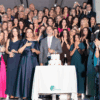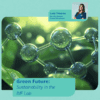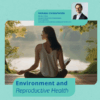Newer insights in endometrial preparation for Frozen Embryo Transfer (FET)
By Dimitris Michalakis, MD, MSc, Assisted Reproductive Gynecologist
Frozen Embryo Transfers (FET) have substantially increased in recent years, reshaping the landscape of assisted reproductive technology. In 2018, FET accounted for approximately 65% of all IVF cycles in Europe, while fresh embryo transfers accounted for roughly 35% [1]. Several factors can be attributed to this transition towards FET. One reason is that it permits greater synchronization between the embryo and the uterine lining of the recipient, as well as an optimal endometrial and hormonal environment, which increases the likelihood of implantation. Furthermore, FET reduces the risk of ovarian hyperstimulation syndrome, a potential complication of fresh embryo transfer in women characterized as high responders.
A modern IVF clinic is required to provide the highest level of services in terms of embryo freezing and thawing in order to support this tendency towards the Frozen Embryo Transfers. On this basis, we firmly support and embrace the presence of cutting-edge embryological laboratories and experienced embryologists in assisted reproduction units in order to electively freeze and thaw embryos in the most optimal way. It is therefore clear that the development of biotechnology and the trend towards FET constitutes a significant advance in fertility therapies, providing patients, embryologists, and clinicians with an important tool to provide high-quality services.
In terms of endometrial preparation for a frozen embryo transfer (FET), there are several protocols that can be followed. Artificial endometrial preparation is a common practice in which estrogens are administered to stimulate and thicken the endometrium, thereby creating an optimal environment for embryo implantation. Natural cycle FET is an alternative method in which no additional hormones, specifically estrogens, are administered and the transfer is scheduled according to the woman’s natural ovulation. Without a doubt, advancements in endometrial preparation for FET have significantly increased the success rates and outcomes for patients undergoing fertility treatments. However, it is important to note that the use of additional hormones in traditional FET may also come with potential risks and side effects.
Recent findings regarding obstetrical outcomes have emerged despite the high success rates of both artificial and natural endometrial preparation for frozen embryo transfer. A recent systematic review and meta-analysis published in Human Reproduction Update by Zaat et al. demonstrated that artificial frozen embryo transfer is associated with a variety of obstetrical complications compared to natural frozen embryo transfer, including large for gestational age (LGA) embryo, macrosomia, low birth weight, early pregnancy loss, preterm birth, very preterm birth, hypertensive disorders of pregnancy, preeclampsia, placenta previa, and postpartum hemorrhage [2]. Therefore, natural cycle FET seems to be a safer option for women who prefer to avoid these potential risks associated with hormonal stimulation.
The association between luteal phase support in a natural frozen embryo transfer cycle and pregnancy outcomes was another intriguing finding of this study. In particular, progesterone supplementation during the luteal phase of a natural FET cycle is associated with a lower risk of preterm birth when compared to no progesterone supplementation. During the luteal phase of early pregnancy, the progesterone hormone serves an essential function in sustaining the uterine lining and promoting embryo implantation and development. This finding suggests that progesterone supplementation during this phase may help to ensure a more favorable environment for the developing fetus, thereby reducing the risk of preterm birth and enhancing overall pregnancy outcomes [2].
At Embryolab, the health and well-being of our patients is our top priority; we strive not only to offer the highest success rates but also to support all aspects of the pregnancy journey. Based on these recent findings, our primary goal is to support the implementation of natural endometrial preparation for a frozen embryo transfer and to provide the best luteal phase support feasible. By combining these two methods, we hope to give our patients the greatest chance of achieving a fruitful pregnancy and having a healthy child. Our team of experienced professionals will guide you through each phase of the process, ensuring that you receive individualized care and attention throughout your journey to parenthood.
References:
- “ART in Europe, 2018: Results Generated from European Registries by ESHRE—PubMed.” PubMed, July 5, 2022, pubmed.ncbi.nlm.nih.gov/35795850.
- Zaat, T. R., et al. “Obstetric and Neonatal Outcomes After Natural Versus Artificial Cycle Frozen Embryo Transfer and the Role of Luteal Phase Support: A Systematic Review and Meta-analysis.” OUP Academic, 12 May 2023, dx.doi.org/10.1093/humupd/dmad011.






